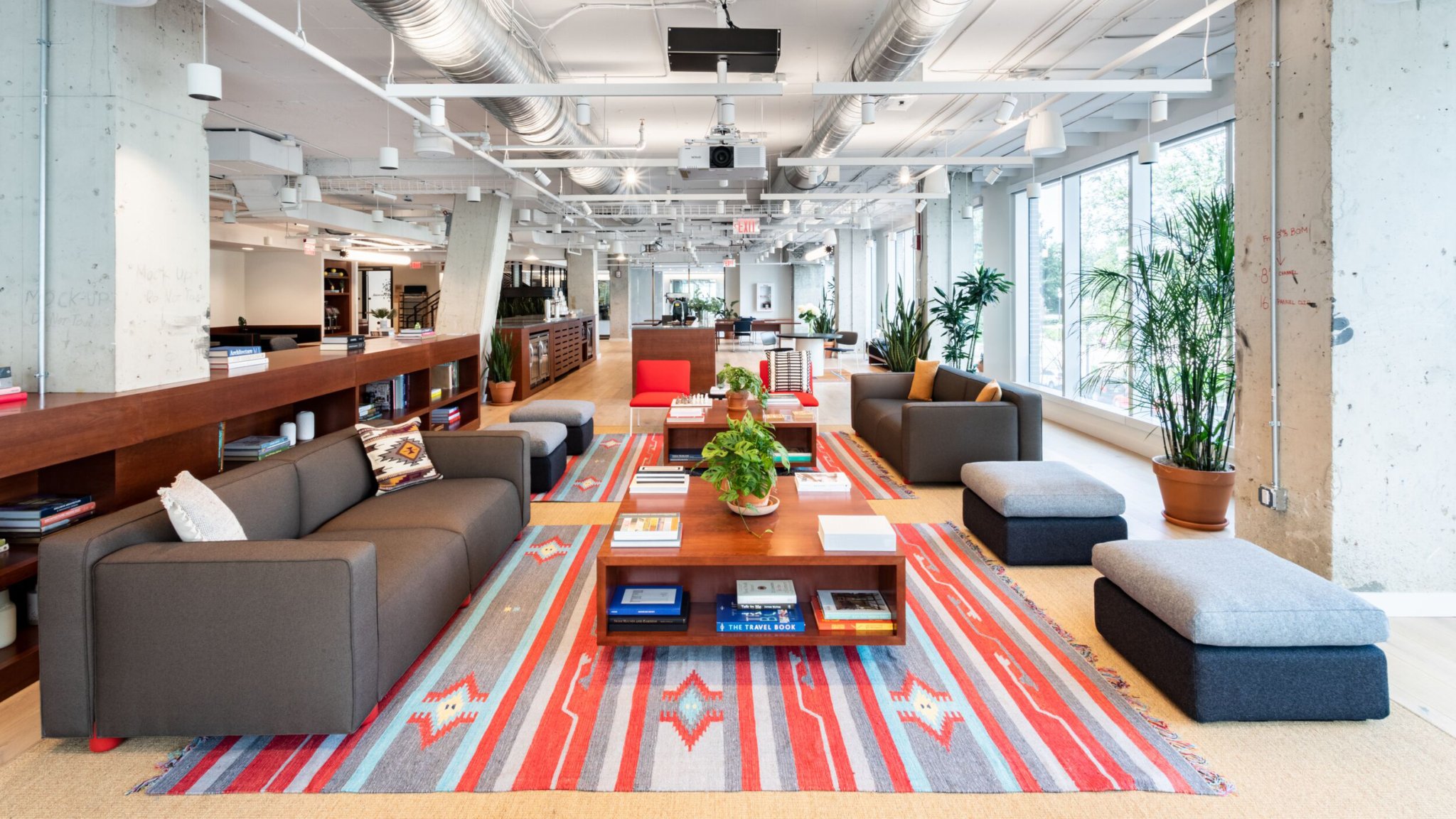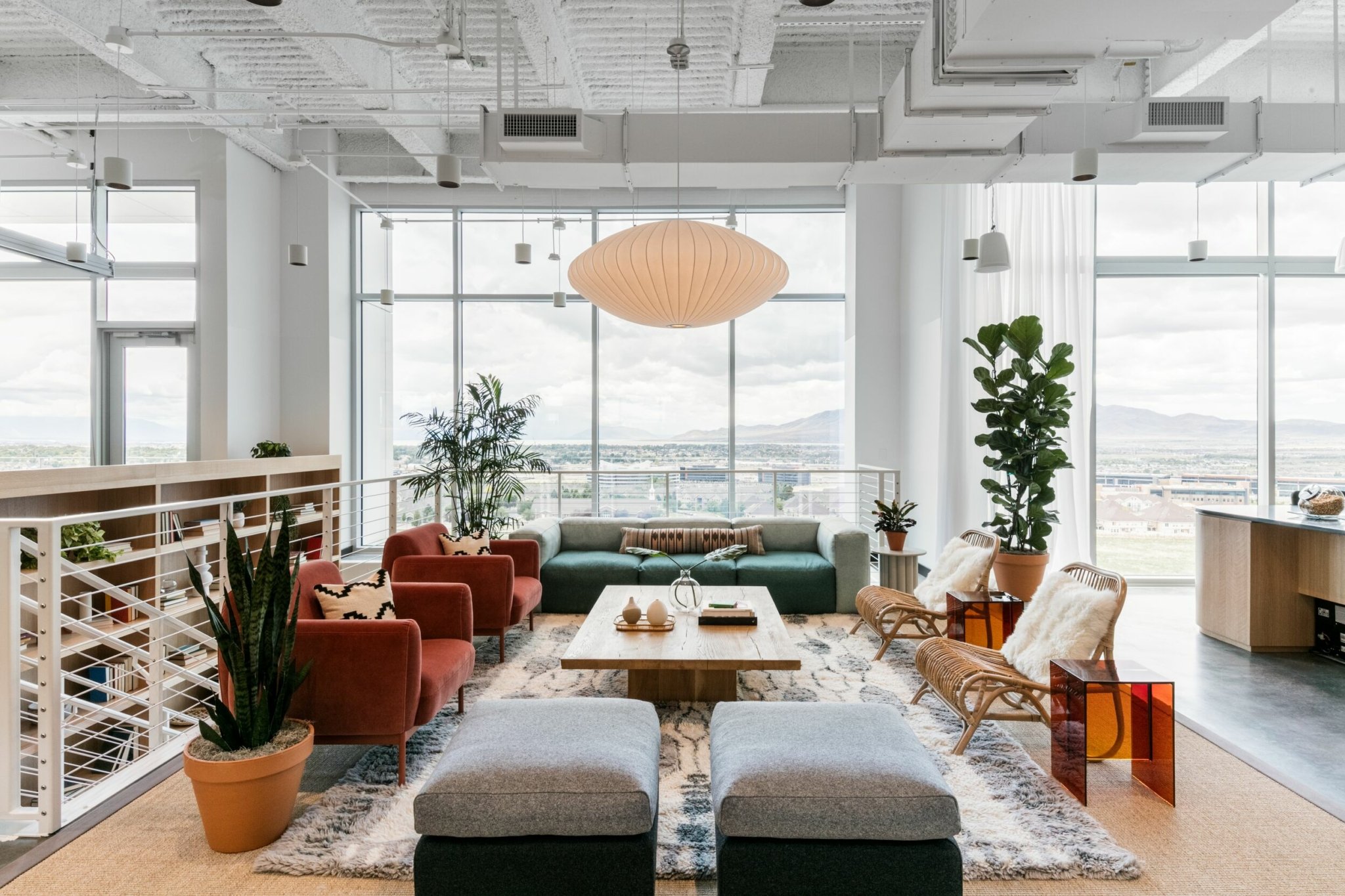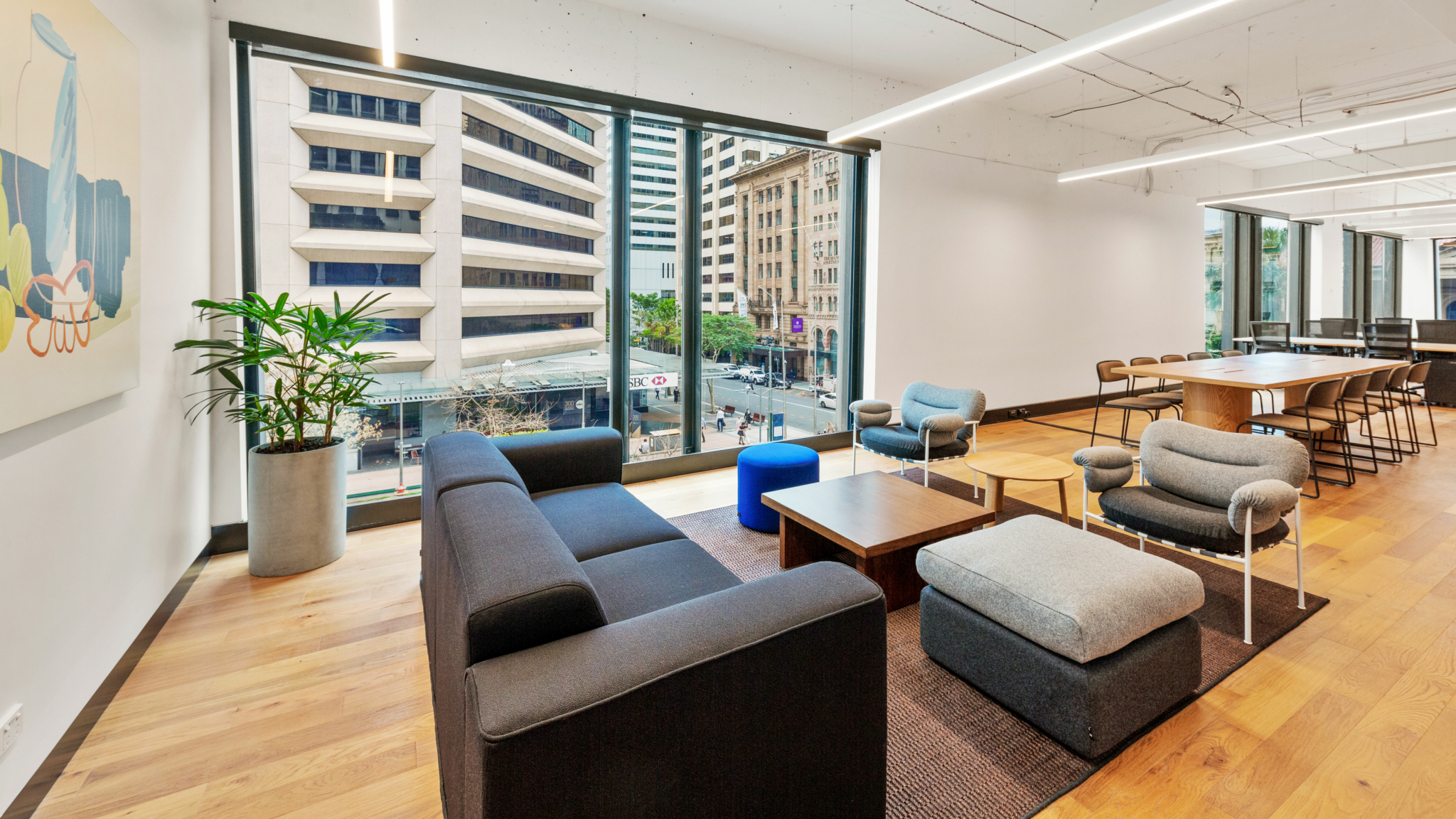Take a midday walk on a sunny workday and you’ll experience firsthand how lighting can affect your mood and productivity. Recent research in ergonomics—the study of people’s efficiency in their working environment—shows that this phenomenon is not just in your head.
In fact, a full one-third of workers would be happier at work if they had better lighting in the office, according to a 2018 international survey conducted by Staples. An overwhelming 80 percent of employees said that having good lighting in an office was important to them. Finding the best office lighting has, with good reason, become a top priority for design teams and office managers.
Office lighting and productivity
Whether an office’s light source is natural, artificial, bright and blue, or dim and yellow, the type of light that employees are exposed to not only impacts mood, circadian rhythms, and physical health but also affects productivity and creativity. “There are a lot of interesting studies around the nature of your environment and how it affects your brain’s ability to perceive and function in different ways,” says Star Davis, who heads up WeWork’s global team of dedicated lighting specialists.
On the plus side, Davis explains, “Having lights around allows people to be more creative and have more creative ideas.” Creatively, you are at your best when you are well rested, alert, and energized, and the right lighting can put you in the right state. But lighting that is too dim can strain your eyes and make you feel drowsy and tired. Too-bright lighting, on the other hand, can be harsh on your eyes, mess with your sleep, and trigger symptoms of migraines. “If your brain is working extra hard to fill in the blanks, it causes fatigue and impairs your ability to be creative and productive,” Davis says.
Choosing the best office lighting
With so many kinds of light colors and fixtures, it can be tough to determine what type of lighting is best for the office. These tips and guidelines should direct you toward office lighting that will keep your employees inspired, engaged, and healthy.
LED versus fluorescent office lights
In recent years, LED lights have come into favor as an energy-efficient alternative to fluorescent lights. While LED lights may be slightly more expensive than fluorescent ones, when used in an office, they’re likely to save a company money in the long term. This is because LED lights generally have a longer lifespan than fluorescent lights and don’t use excess energy in the form of infrared radiation the way fluorescent lights do.
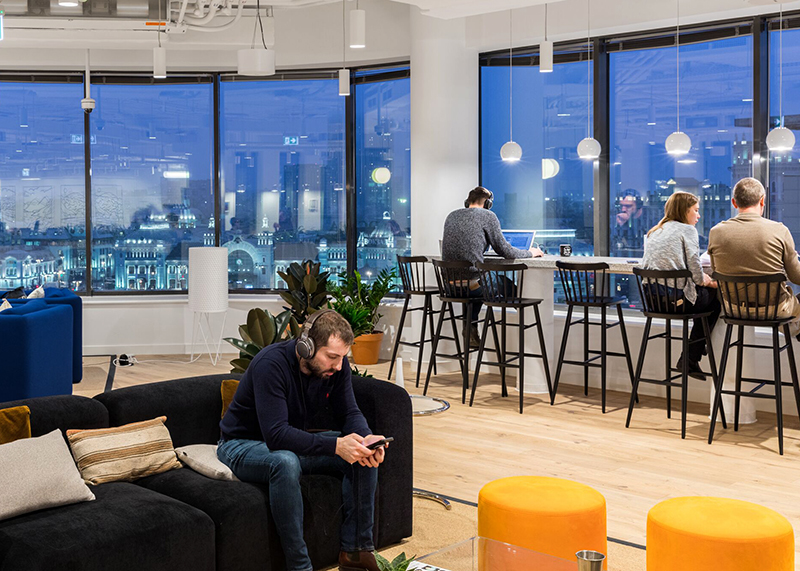
LED lights can also be beneficial to the health of employees. Although it’s unlikely that fluorescent lights could cause migraines, they may trigger symptoms of migraines in people who are predisposed to them. Because employees often stay at the office past sundown, fluorescent lights can also interfere with sleep patterns by inhibiting the production of melatonin. LED lights, on the other hand, can usually be dimmed to match the time of day and the season, making them a better choice for the health of employees.
Make the most of natural light
Employees who were exposed to natural light in the office reported an 84 percent drop in eye strain, headaches, and blurred vision, according to research by the department of design and environmental analysis at Cornell University. Research from the American Academy of Sleep Medicine also showed that exposure to natural light helps regulate hormones and keeps your circadian rhythm in check, helping employees sleep soundly at night and work productively the next day.
“When designing buildings, we take into consideration the ceiling height, orientation of the building, latitude, and neighboring building obstructions,” in order to maximize the impact of direct sunlight, says Davis. Areas with windows are typically designated for common areas rather than for private offices, so that as many people as possible can have access to natural light.
If your office is windowless, consider skylights, like the one in WeWork Prestige Central, our latest HQ building based in Bengaluru, India, which features a large skylight and materials that radiate the light.
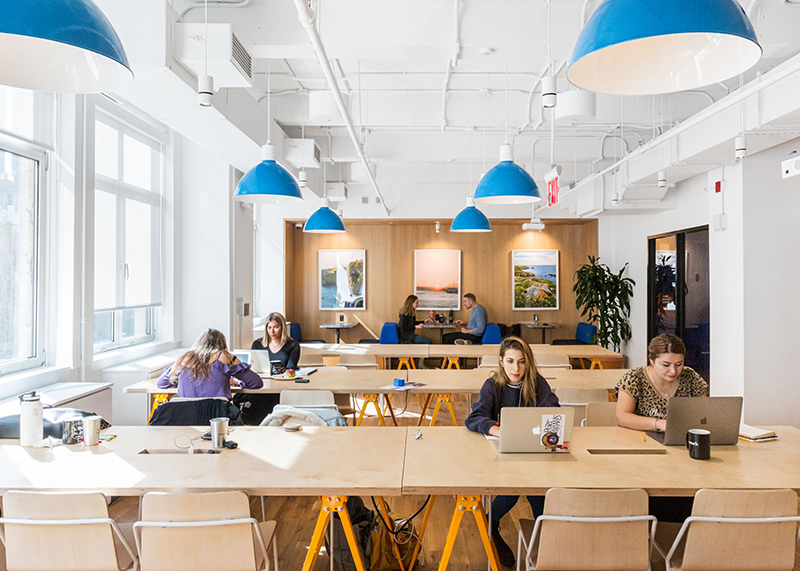
Color and temperature of office lighting
The color and temperature of office lighting should vary based on the function of the space. “The right amount of light and the health implications of different spectrums and intensity of light are tremendously important and are elements we consider in our design,” Davis says.
In general, warmer yellow or orange lights tend to be better for relaxing, whereas cooler blue and white lights are good for working, waking up, and concentrating. If possible, the lighting temperature and color should vary based on the time of day. In the morning, light should ideally be brighter and cooler, to help employees stay alert and concentrate. As the day goes on, the lighting should be warmer, helping employees to wind down.
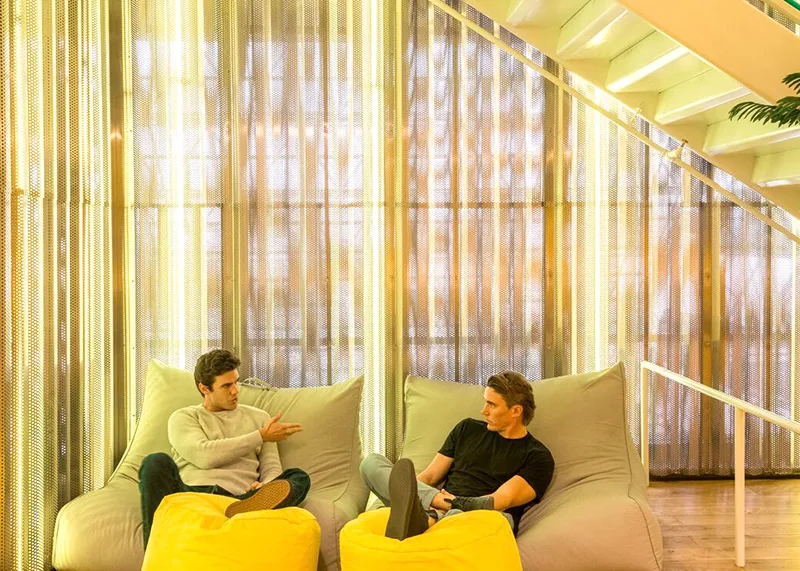
How bright is too bright for office lighting?
“In terms of brightness, the most important thing to consider is the task that you’re doing,” Davis says. It makes sense to have common areas and kitchens drenched in natural light, as this light is diffuse, and employees aren’t usually looking at screens in these settings.
In workspaces, however, we are limited by our technology. “The light from the laptops and desktops is nowhere near the power and brightness of the sun, so the brightness of natural light can overwhelm what we’re able to see [on laptop screens],” Davis says. This is why desks and workspaces require a more controlled environment—one in which some of the intensity of the sun is blocked out or diffused.
Office lights for saving energy
Energy-efficient light bulbs worth using include LED, halogen incandescents, and compact fluorescent lamps (CFLs). Another way to save energy is to set up motion-sensored lights in areas that are used periodically, like bathrooms, basements, and supply closets. Putting lights on a timer can help save money by ensuring that they aren’t left on when no one is in the room. Also, installing dimmers allows you to turn down the lights when your work doesn’t require maximum brightness.
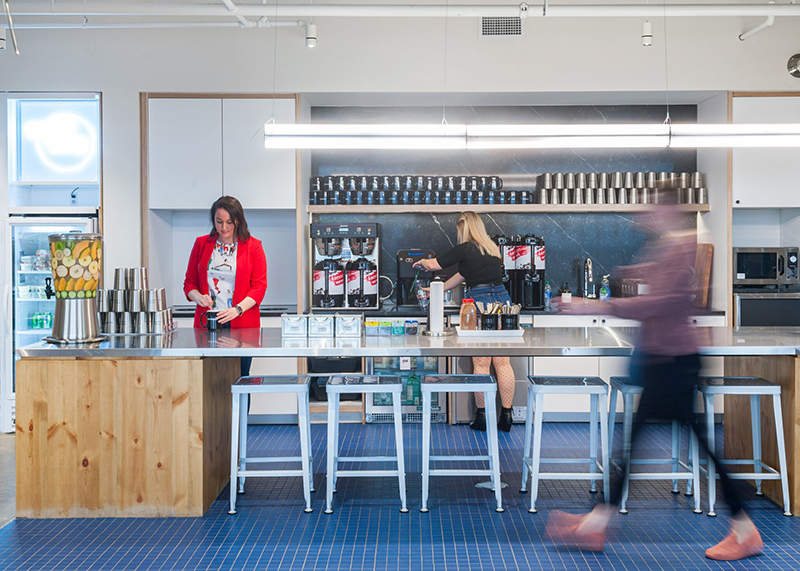
The power of the right light
At WeWork, “our lighting team’s breadth of experience and technical knowledge allow us to dive really deep, whether it’s to energize and create a productive working space or a relaxation zone,” says Jenny Werbell, a senior lighting lead who works closely with Davis. If you’re interested in diving deeper into the bright world of lighting, Davis recommends Sarah Williams Goldhagen’s book Welcome to Your World: How the Built Environment Shapes Our Lives, which is filled with studies that speak to the importance of environmental design on overall well-being.
Jenna Wilson is a senior associate on the social media team at WeWork and a writer for Ideas by We. She writes about impact, sustainability, and WeWork’s employees around the world.





